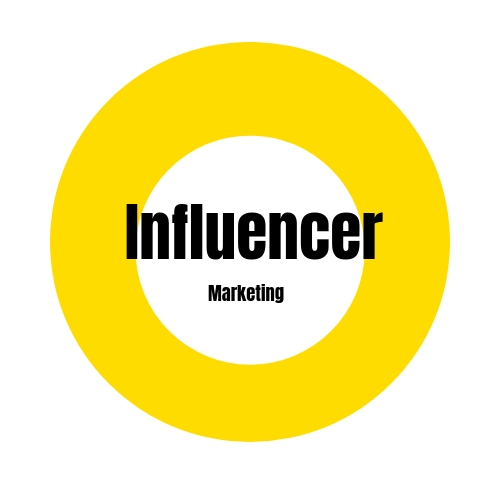



Influencer marketing shows no signs of slowing down. In fact, nearly 40% of marketers have shown interest in increasing their budgets for influencer marketing.Businesses use influencer marketing to increase their reach, brand awareness, engagement, and sales. They collaborate with influencers in their niche to launch or promote their products or services.However, this form of marketing doesn’t come without its fair share of challenges. Some marketers face challenges calculating the ROI, identifying the right influencers, or with other aspects of their campaigns.If you too have faced similar challenges, this post will help you with some effective tips to overcome them.
1. How to Approach Influencers the Right Way
It’s always a challenge to approach influencers in a way that gets them to say “yes” to the collaboration. As mentioned earlier, influencer marketing is immensely popular and so, there’s a great demand for influencers. As a result, some influencers get a lot of requests from different brands.
This has made influencers very selective when it comes to deciding the brands they want to collaborate with. So, you should approach them in a way that makes them want to say “yes” to your offer.
Here are some ideas on how to approach influencers the right way:
a) Follow Influencers on Social Media
To get on the radar of your potential influencers, you need to follow them on social media. The posts on their social accounts will give you an idea of their work, reach, and engagement.
Engage with their posts – you can like them, share them, or even comment on them. But make sure to comment something meaningful. This will eventually help you build your relationships with influencers.
b) Draft a Win-Win Proposal
You need to create a proposal that addresses both yours and your influencers’ interests. Introduce yourself at the very beginning of the proposal and don’t forget to show your appreciation for their work.
The proposal needs to have a clear explanation of why you are reaching out to them. This will help your potential influencers understand their responsibilities and role in the campaign.
Talk about how the partnership is related to their niche and therefore, relevant. Also, mention the benefits they can expect from the collaboration. Feel free to cite examples of your past collaborations too. Conclude your email by inviting them to have a one-on-one meeting to discuss the opportunity in detail.
c) Follow Up
There’s no need to panic if you don’t get an immediate reply from influencers. You need to understand that they get many emails every day. And it’s not possible for them to answer each one.
Wait for 2-3 days, and if they still don’t reply, then send the influencer a follow-up email.
2. How to Measure ROI of the Campaign
The biggest challenge for 76% of marketers is to calculate the ROI of their influencer marketing campaign. Here are the three important metrics you can use to measure the ROI of your campaign.
a) Measure Conversions
Conversions can include sales figures or responses to CTAs. Measuring conversions is a very straightforward approach to calculate the ROI from your marketing campaign.
You must relate your conversions to your campaign goals, which you had identified in the initial stages of influencer marketing campaign.
For example, let’s say your campaign goals were to get 1000 people to subscribe to your newsletter and boost your sales by $50,000. To measure the conversion rate, you’ll need to calculate both those metrics.
b) Measure Campaign’s Reach
There are two indicators to measure a campaign’s reach. First, you need to measure the growth in your follower count. Influencers create very attractive content and it can motivate their followers to follow you on social media.
At the end of your campaign, you need to measure the increase in the total number of your social media followers.
The second indicator is website traffic. When influencers talk about your brand on social media or their blogs, they might include links to your website to generate organic traffic as well.
You can use Google Analytics to measure organic traffic directed to your website by influencer-generated content. These two indicators will help you measure your campaign’s reach.
c) Measure Total Engagement
You’ll need to quantify and calculate the number of comments, clicks, shares, likes, and reactions to measure the total engagement. You can also track and evaluate cost per engagement (CPE). This will give you an idea of how consumers are reacting to your brand.
To calculate CPE, you need to divide your total investment by the total engagement generated from the influencer marketing campaign.
You can also use influencer marketing platforms to measure the ROI of your marketing campaign. Platforms like Reelio give you access to the detailed metrics of your campaign. It enables you to review and track the performance of influencer-generated content.
Reelio collects data and information from social media platforms like Facebook and YouTube to provide detailed reports on your reach, engagement, views etc. all in one place.
3. How to Identify Genuine Influencers
Another challenge which many brands face is in identifying the right influencers and staying away from fake ones. If you think that a large following can translate into a high engagement rate, you’re mistaken. It’s important to weed out the fake influencers from the real ones when you are searching for relevant influencers.
If you come across any of the below red flags, you should proceed with caution:
a) New Accounts with Huge Number of Followers
You have to keep an eye out for accounts which have gained an unusually high number of followers in a short time. Because it’s not easy to win the trust of people and gain followers organically. To increase the follower count organically, one has to invest time and put in a lot of hard work.
Whenever you encounter an account which has a huge number of followers, monitor the account to see if the followers are bots or real people. However, if the account belongs to a celebrity, then the number of followers can shoot up in just a few days.
b) Calculate the Engagement Rate
This is one of the most effective ways to identify genuine influencers. To calculate the engagement rate, consider the most recent 20-30 posts of the influencer and divide the number of likes, shares, and comments by their follower count.
If the engagement rate is poor when compared to their number of followers, chances are high that their influence isn’t genuine. You also need to reconsider influencers when their engagement rate drops and/or increases suddenly.
c) Monitor the Quality of Engagement
The third way to identify genuine influencers is to monitor the quality of their engagement. All you have to do is scan some of the recent posts of the influencer and the comments on them. This will help you identify if the comments are from real people or not.
If the comments are similar to each other or/and they look spammy, chances are they are from bots. However, if the comments are thoughtful, then they’re likely to be from real people.
Final Thoughts
There are challenges in every form of marketing and influencer marketing is no different.
The challenges mentioned above are the most common ones faced by influencer marketers. If you are facing any of these challenges, then these tips can help you out.
Can you think of any other challenges in influencer marketing and ways to overcome them? Let us know in the comments below.
 Customer Experience (CX) – Understanding the On-going Marketing Paradigm Shift.
Customer Experience (CX) – Understanding the On-going Marketing Paradigm Shift.
 5 Ways on How to Independently Boost your Online Music Portfolio in 2022
5 Ways on How to Independently Boost your Online Music Portfolio in 2022
 Go Viral! The Tipping Point Theory
Go Viral! The Tipping Point Theory